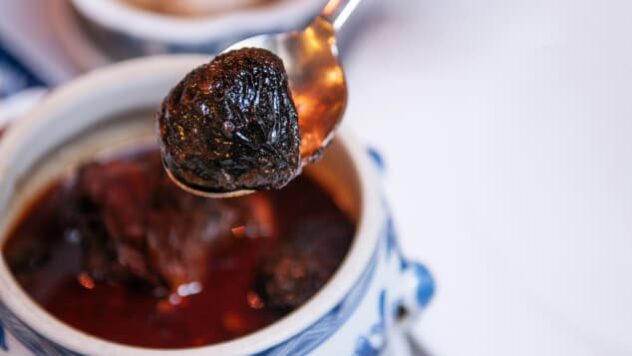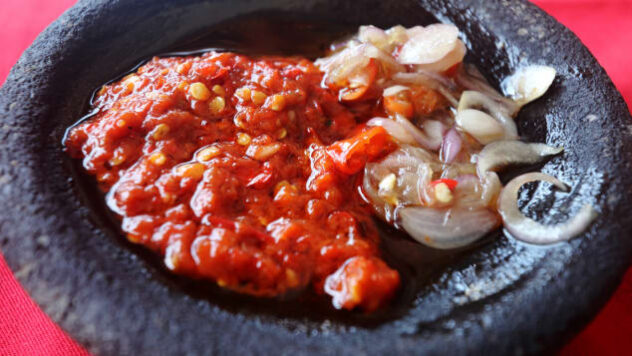
©Sharon Wee and Marshall via CNN
Vocabulary:
- marry /MAR-ee/
- coin /koin/
- ferment /FER-ment/
- toxicity /tok-SIS-i-tee/
- versatile /VUR-suh-tl/
[verb] – to combine two different qualities
This painting marries romance and nature.
[verb] – to invent a new word or expression, or to use one in a particular way for the first time
Some sources claim that the term “Philosophy” was coined by Greek thinker Pythagoras.
[verb] – If food or drink ferments or if you ferment it, it goes through a chemical change because of the action of yeast or bacteria, which may cause it to produce bubbles or heat, or turn sugars in it into alcohol.
Mr. O’Brien taught me how to ferment wine.
[noun] – the fact that something is poisonous or the degree to which it is poisonous
A study found heavy metal toxicity in some vegetables.
[adjective] – able to change easily from one activity to another or able to be used for many different purposes
This dress is so versatile! I can wear it for a day out or a party.
Article reading:
Ayam buah keluak (chicken stewed with black nuts)
©PixHound/Adobe Stock via CNN
 Nothing says Peranakan cuisine more than Ayam buah Keluak. This stew is made with chicken, tamarind, spices, and buah keluak nuts that are needed to be fermented for a few months to reduce their toxicity.
Nothing says Peranakan cuisine more than Ayam buah Keluak. This stew is made with chicken, tamarind, spices, and buah keluak nuts that are needed to be fermented for a few months to reduce their toxicity.
Hee pio soup (fish maw soup)
©Sharon Wee and Marshall via CNN
 Eaten during Lunar New Year feasts, this hearty soup contains meatballs, fishballs, chicken, cabbage, and egg rolls.
Eaten during Lunar New Year feasts, this hearty soup contains meatballs, fishballs, chicken, cabbage, and egg rolls.
Sambal belachan (shrimp paste chili)
©Huang Yuetao/Adobe Stock via CNN
 This versatile paste adds a kick to any dish. It is made by blending belachan (dried shrimp paste), red chilies, kaffir lime leaves, and a pinch of sugar.
This versatile paste adds a kick to any dish. It is made by blending belachan (dried shrimp paste), red chilies, kaffir lime leaves, and a pinch of sugar.
Kueh ko sui (palm sugar cake)
©chee siong teh/Adobe Stock via CNN
 For dessert, Nyonyas offer a chewy cake called Kueh Ko sui. It is made by combining gula melaka (palm sugar), rice flour, tapioca flour, and lye water. The mixture is steamed, cut into cubes, and rolled in freshly grated coconut.
For dessert, Nyonyas offer a chewy cake called Kueh Ko sui. It is made by combining gula melaka (palm sugar), rice flour, tapioca flour, and lye water. The mixture is steamed, cut into cubes, and rolled in freshly grated coconut.
The Peranakans’ age-old cuisine and culture are still thriving in many Asian countries like Singapore, Malaysia, and Indonesia. They can be experienced in restaurants, neighborhoods, and museums.
Discussion Questions:
- Compare Japanese cuisine with Peranakan cuisine. What are some differences and similarities?
- Which among the foods in the article would you recommend to your family and friends? Why?
- If you were a food critic/writer, which country’s cuisine would you like to write about? Which dishes would you highlight?
- Should more people around the world discover Peranakan cuisine?
- In your opinion, why is it important to try new foods?
Summarization
Describe:
- technique
- reduce
- chewy
- mixture
- neighborhood